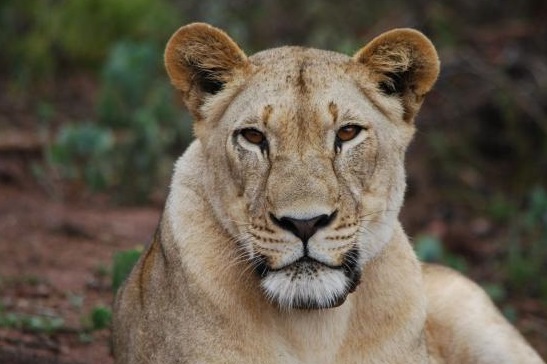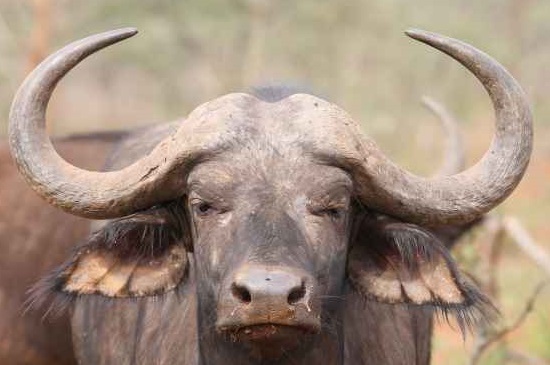Akagera National Park
History of Akagera National Park.
Prior to it being gazetted as a national park, Akagera was a forest reserve with a rich bio-diversity in flora and fauna species. Later in 1934, Akagera was given the status of a national park by the Belgian government. This was done in an effort to protect the remaining species of wildlife animals that were under threat in the national park.
Akagera National Park in Rwanda is one of the oldest national parks on the African continent and the biggest in Rwanda. Previously the national park originally covered 2,500 square kilometers.
The national park sheltered a large population of wildlife animals such as; elephants, lions, buffaloes, rhinoceros, leopards, lycanos, antelopes, hippos, topi and so many more. The national park had so many Lycanos (wild dogs) that it was named the ‘Park of Lycanos.’ However, a large majority of these wild dogs were killed by an epidemic that spread in the national park, with the last of the species reported to have been seen in 1984.
After the 1994 Rwandan Genocide, most Rwandan refugees returned back home, with a great majority settling in Akagera National Park. As a result, most of the park’s forests were cleared to get land for farming and grazing animals. A large number of animals in the park were hunted down and killed as an alternative source of food for the large masses.
As a result of the continuous poaching of wildlife animals in the park and deforestation, over 25% of Akagera national park was destroyed. Some wildlife species became extinct in the park such as rhinoceros and lions. The last rhino in the park was reported to have been seen in 2007, and lions were last seen in the park around the same time. Originally, Akagera national park was home to over 300 lions and had more than 50 black rhinos.
In 2009, a joint management agreement was signed between an NGO called African Parks and the Rwanda Development Board, in order to manage Akagera National Park. later in 2010, the Akagera Management Company was formed, which oversees the smooth running of the national park.
Among the successes of the Akagera Management Company (AMC), was the introduction of seven lions to the park in 2015. The lions were translocated from South Africa to Akagera National Park in Rwanda. The reintroduction of these lions in Akagera came after a 15 year absence of the species in the national park.
Later in May 2017, Akagera national park received 18 black eastern rhinoceros from South Africa; thus seeing the reintroduction of rhinos in the park after their 10 year absence. the number of the rhinos in the park increased following the birth of a calf a few years later.
In June 2019, five more black rhinos were translocated from a zoo in the Czech Republic to Akagera National Park in Rwanda. This marked the longest translocation of rhinos from Europe to the continent of Africa, covering a distance of 2,485 miles. This initiative has increased the number of rhinos in the national park, and tourists visiting the national park have higher chances of seeing rhinos while on a game drive in the national park.
Other improvements have been made in the national park and these include; the acquisition of a helicopter for aerial surveillance in the park, the introduction of an anti-poaching canine unite and the employment of more park rangers to beef up security in the park.
The park has also reported an increase in the number of visitors it has received, with 44,000 tourist visits recorded in 2018 alone. The national park also earned about USD 2 million dollars as tourism revenue in the same year, making Akagera National Park a 75% self- financing national park.
Map of Akagera National Park.

Attractions of Akagera National Park.
Tourists visiting Akagera National Park can be certain that there are quite a number of interesting attractions for you to see in the national park, and these include;
- Wildlife: Akagera National Park has recorded 8,000 large animals living within the park and some of these animals include; the Cape Buffalo, African Bush Elephant, Black Eastern Rhinos, Lions, Leopards, Rothschild Giraffes, Hippopotami, Bruchell’s Zebras, antelopes, waterbucks, impala and so many more.
- Primates: Visitors in the national park also have a chance to see primates such as; vervet monkeys, the black and white colobus monkeys, olive baboons, silver monkeys and blue monkeys.
- Bird Species: Akagera National Park is home to over 500 species of birds, hence making the park a birder’s haven. Among some of the birds that tourists can see in the park are; the Suaza Shrike, Raptors, the rare Shoebill stork and the great sniper bird among others.
- Lakes: There are 10 lakes located within Akagera national park and these can be explored by visitors in the park. Some of the most commonly visited lakes in the park include Lake Ihema and Lake Shakani.
Activities in Akagera National Park.
Tourists visiting Akagera National Park in Rwanda can take part in a number of activities from game drives to boat cruises, guided nature walks, camping, hiking, fishing, bird watching to mention but a few.
Game Drives in Akagera National Park.
Game drives in Akagera national park are the ideal way for visitors to explore this beautiful, rich and vast national park. The national park offers its visitors both day and night game drives, with morning game drives starting as early as 6am and night game drives commence at 6pm in the evening.
Among some of the wildlife animals that visitors can see during a game drive include; Sitatunga, Jackals, Hyenas, elephants, giraffes, antelope, kobs, impala and so many more. Night game drives in Akagera national park, offer tourists better chances to see nocturnal animals such as; jackals, leopards, lions, serval cats and civets.
Game drives in Akagera National Park in Rwanda last between 1-3 hours and cost USD 30 dollars per person for day game drives and USD 40 dollars for night game drives. Visitors are advised to have a park guide accompany you during a game drive, as this makes it easier for you to locate specific wildlife animals in the park that you would like to see.
Boat Trips in Akagera National Park.
 Launch Trips or rather Boat trips/cruises in Akagera National Park, give visitors the chance to explore the beautiful crystal lakes within the national park. Most boat cruises in Akagera are carried out on Lake Ihema where you will get to see lots of hippos and crocodiles. Boat trips in the park are scheduled four times a day at exactly 7:30am, 9am, 3pm and 4:30pm. However, there are also unscheduled boat trips available in the park for visitors who wish to take private tours.
Launch Trips or rather Boat trips/cruises in Akagera National Park, give visitors the chance to explore the beautiful crystal lakes within the national park. Most boat cruises in Akagera are carried out on Lake Ihema where you will get to see lots of hippos and crocodiles. Boat trips in the park are scheduled four times a day at exactly 7:30am, 9am, 3pm and 4:30pm. However, there are also unscheduled boat trips available in the park for visitors who wish to take private tours.
Bird Watching In Akagera National Park.
 There are over 500 bird species that inhabit Akagera national park and some of the birds that visitors are likely to see while on a birding expedition in the park include; the rare and highly sought after Shoebill Stork, Swamp Fly Catchers, white egrets, the marabou Stork, the Yellow Sunbird, the grey crowned crested cranes and herons to mention but a few. Birding trips in Akagera national park cost USD 30 per person.
There are over 500 bird species that inhabit Akagera national park and some of the birds that visitors are likely to see while on a birding expedition in the park include; the rare and highly sought after Shoebill Stork, Swamp Fly Catchers, white egrets, the marabou Stork, the Yellow Sunbird, the grey crowned crested cranes and herons to mention but a few. Birding trips in Akagera national park cost USD 30 per person.
Fishing in Akagera national park.
Fishing in Akagera national park is done on Lake Shakani, and common fish species such as Tilapia and Cat fish can be caught in the lake. The park also organizes fishing tournaments on this lake, however visitors interested in taking part in these fishing competitions will have to directly contact the reservations team in the park.
Hiking and Guided Nature Walks.
 Visitors in Akagera can embark on hiking adventures and guided nature walks in the national park. Hiking and natures walks in the park give visitors an opportunity to view a variety of flora and fauna species including plant, tree, insect, butterfly and bird species.
Visitors in Akagera can embark on hiking adventures and guided nature walks in the national park. Hiking and natures walks in the park give visitors an opportunity to view a variety of flora and fauna species including plant, tree, insect, butterfly and bird species.
Community Tours in Akagera National Park.
 Community tours in Akagera National Park present visitors with the opportunity to mingle with the local people living in the communities near the national park. During the community tours, visitors are introduced to the Rwandan culture through dance performances, folk songs and stories as well as traditional arts and crafts. Visitors also get to visit local farms and get to learn how to milk cows and make local ghee. Going on a community tour will also give you, the visitor an opportunity to learn how to cook tradition Rwandan dishes, make local banana beer and harvest honey from bee farms.
Community tours in Akagera National Park present visitors with the opportunity to mingle with the local people living in the communities near the national park. During the community tours, visitors are introduced to the Rwandan culture through dance performances, folk songs and stories as well as traditional arts and crafts. Visitors also get to visit local farms and get to learn how to milk cows and make local ghee. Going on a community tour will also give you, the visitor an opportunity to learn how to cook tradition Rwandan dishes, make local banana beer and harvest honey from bee farms.
Other activities visitors in Akagera can engage in include; behind the scenes, camping and ‘walk the line’ hiking tour.
Animals Found In Akagera National Park.
Akagera National Park is the only haven for savannah wildlife animals in the Republic of Rwanda. The national park has recorded over 8,000 large animals; with over 100 African bush elephants, more than 80 Rothschild giraffes, over 15 lions, and about 25 black eastern rhinos. There are plenty of wildlife animals living with the national park and these include; roan antelopes, bushbucks, bohor reedbucks, oribis, Klipspringer, cape eland, bush babies, impalas, topi, hartebeests, zebras, hyenas, warthogs, buffaloes, crocodiles, duikers and so many more.
The park also shelters over 500 species of birds, and these include; the Senegal Lapwings, Squacco Herons, Giant Kingfisher, the Grey Crowned Crane, the African Darter, Long-toed and Water Thick Knee birds, the rare Shoebill Stork, Papyrus Gonolek, the Hamerkop, Cattle Egret, and Fan-tailed Widow bird among others.











